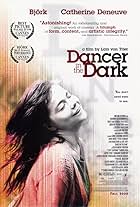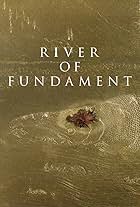IMDb RATING
6.5/10
1.6K
YOUR RATING
The film concerns the theme of self-imposed limitation and continues Matthew Barney's interest in religious rite, this time focusing on Shinto.The film concerns the theme of self-imposed limitation and continues Matthew Barney's interest in religious rite, this time focusing on Shinto.The film concerns the theme of self-imposed limitation and continues Matthew Barney's interest in religious rite, this time focusing on Shinto.
- Awards
- 1 nomination
- Director
- Writer
- All cast & crew
- Production, box office & more at IMDbPro
Storyline
Did you know
- SoundtracksGratitude
Written by Björk and Matthew Barney
Vocal by Will Oldham
Harp played by Zeena Parkins
Celeste played by Jónas Sen
Keyboard played by Nico Muhly
Arranging & editing by Björk
Programming by Björk and Valgeir Sigurðsson
Produced by Björk
Featured review
To hear Matthew Barney interviewed, saying things like "I will continue to manipulate space in film," you would think that he has nothing on his mind but process. Yet the evolution of Drawing Restraint 9 is spiritual, not formal. DR9, in fact, is a complete repudiation of the noxious Ayn Rand-stinking cosmology of the Cremaster films. Freud has been replaced by Jung, and Hegel by Kierkegaard. This is a Barney film that could bring you to tears. Any doubts about whether he's an artist or fraud are laid to rest by this film -- frauds do not grow, they just keep along the same path.
I had my doubts about the Cremaster films ( except for Cremaster 2, still the most uncanny piece on Barney's resume ) The first hour and a half of Drawing Restraint 9 had me squirming, sure that Barney was unmasking himself as a joke once and for all. All of Barney's faults are on display -- the crude appropriation and dim understanding of other cultures and myths, the glossy yet flat cinematography that would only look stylish to a reader of Vogue, the hunch that the only movie he's ever seen is The Shining, and a generally unfocused feeling, as if he's casting around for meaning that isn't there. And then, of course, there are those endless shots of men doing their work, building a better future, creating that obelisk to the sky! Except here the bumbleheaded Hegelian philosophy of history-in-action was even more boring because of the documentary trappings. Instead of showing a legless woman strap on a blade and chop potatoes, a metaphor for a half-completed action, we see real men doing real jobs. Only occasionally Barney has them producing one of his symbols, or sticks a blue feathered afro on top of a tanker, so that we know these seemingly mundane tasks will eventually have vaguely triumphant, Wagnerian results.
Then, suddenly -- if you can speak of suddenness in a film like this, and I think you can -- the Japanese men start loading a harpoon gun and firing nasty spikes at nasty speeds into the sea. And you realize that what you took to be another Barney paean to progress has crumbled. We are now sailing in deep hippie waters, my friend. And the sailing is good. Barney and Bjork retire to a tatami-matted cabin and the film begins to go places the Cremaster films would never dare. The cinematographer suddenly discovers shadow and grain-texture. Bjork's uninspired score becomes hypnotic. A feeling of death, doubt, and failure creeps into the film, as a Japanese sage tells a story of a primal scar made by the collision of two ships, while Barney and Bjork are posed with the edge of a whale statue separating them. The personal, the political, the spiritual and the mythical start to engage in supercollision.
The film seems to have been conceived as an exercise in humility, repentance for the colossal egotism of the Cremaster films. Barney takes pains to highlight his new bald spot, making him look like a tonsured monk, there is a nude scene which proves he is no Vincent Gallo, and -- most memorably -- Barney speaks! As a studly silent mannequin in the Cremaster films, he had mystery, but here he lets you in on the dirty little secret: He has the geekiest voice in history, almost like how a castrato would talk in daily conversation. Listen closer, however, and he sounds almost angelic...
This new humility, which may have roots in marriage troubles or encroaching baldness -- the root of insight is often just this shallow -- justifies the Asiatic trappings. But Barney is hiding his real light under a bushel. It is a Western religion that truly moves him these days. There are a "trinity" ( hint hint ) of symbols consisting of whale ambergris, pomegranate seeds and shrimp whose meaning I won't spoil for you. Except to say that Barney is calling you a shrimp. And asking you to be a whale. The "restraint" of the title starts to feel a whole lot more like renunciation, and the inner joys it brings.
Life is fair after all: It costs ten dollars for a ticket to DR9, and unless you're a zombie, you will get more pleasure and consolation from this film than any billionaire computer-peddler could get out of one of Barney's vaseline tubs.
I had my doubts about the Cremaster films ( except for Cremaster 2, still the most uncanny piece on Barney's resume ) The first hour and a half of Drawing Restraint 9 had me squirming, sure that Barney was unmasking himself as a joke once and for all. All of Barney's faults are on display -- the crude appropriation and dim understanding of other cultures and myths, the glossy yet flat cinematography that would only look stylish to a reader of Vogue, the hunch that the only movie he's ever seen is The Shining, and a generally unfocused feeling, as if he's casting around for meaning that isn't there. And then, of course, there are those endless shots of men doing their work, building a better future, creating that obelisk to the sky! Except here the bumbleheaded Hegelian philosophy of history-in-action was even more boring because of the documentary trappings. Instead of showing a legless woman strap on a blade and chop potatoes, a metaphor for a half-completed action, we see real men doing real jobs. Only occasionally Barney has them producing one of his symbols, or sticks a blue feathered afro on top of a tanker, so that we know these seemingly mundane tasks will eventually have vaguely triumphant, Wagnerian results.
Then, suddenly -- if you can speak of suddenness in a film like this, and I think you can -- the Japanese men start loading a harpoon gun and firing nasty spikes at nasty speeds into the sea. And you realize that what you took to be another Barney paean to progress has crumbled. We are now sailing in deep hippie waters, my friend. And the sailing is good. Barney and Bjork retire to a tatami-matted cabin and the film begins to go places the Cremaster films would never dare. The cinematographer suddenly discovers shadow and grain-texture. Bjork's uninspired score becomes hypnotic. A feeling of death, doubt, and failure creeps into the film, as a Japanese sage tells a story of a primal scar made by the collision of two ships, while Barney and Bjork are posed with the edge of a whale statue separating them. The personal, the political, the spiritual and the mythical start to engage in supercollision.
The film seems to have been conceived as an exercise in humility, repentance for the colossal egotism of the Cremaster films. Barney takes pains to highlight his new bald spot, making him look like a tonsured monk, there is a nude scene which proves he is no Vincent Gallo, and -- most memorably -- Barney speaks! As a studly silent mannequin in the Cremaster films, he had mystery, but here he lets you in on the dirty little secret: He has the geekiest voice in history, almost like how a castrato would talk in daily conversation. Listen closer, however, and he sounds almost angelic...
This new humility, which may have roots in marriage troubles or encroaching baldness -- the root of insight is often just this shallow -- justifies the Asiatic trappings. But Barney is hiding his real light under a bushel. It is a Western religion that truly moves him these days. There are a "trinity" ( hint hint ) of symbols consisting of whale ambergris, pomegranate seeds and shrimp whose meaning I won't spoil for you. Except to say that Barney is calling you a shrimp. And asking you to be a whale. The "restraint" of the title starts to feel a whole lot more like renunciation, and the inner joys it brings.
Life is fair after all: It costs ten dollars for a ticket to DR9, and unless you're a zombie, you will get more pleasure and consolation from this film than any billionaire computer-peddler could get out of one of Barney's vaseline tubs.
- How long is Drawing Restraint 9?Powered by Alexa
Details
- Release date
- Countries of origin
- Official site
- Languages
- Also known as
- Растворение мира
- Filming locations
- Production company
- See more company credits at IMDbPro
Box office
- Gross US & Canada
- $234,743
- Opening weekend US & Canada
- $18,011
- Apr 2, 2006
- Gross worldwide
- $267,275
- Runtime2 hours 15 minutes
- Color
- Sound mix
- Aspect ratio
- 1.85 : 1
Contribute to this page
Suggest an edit or add missing content























